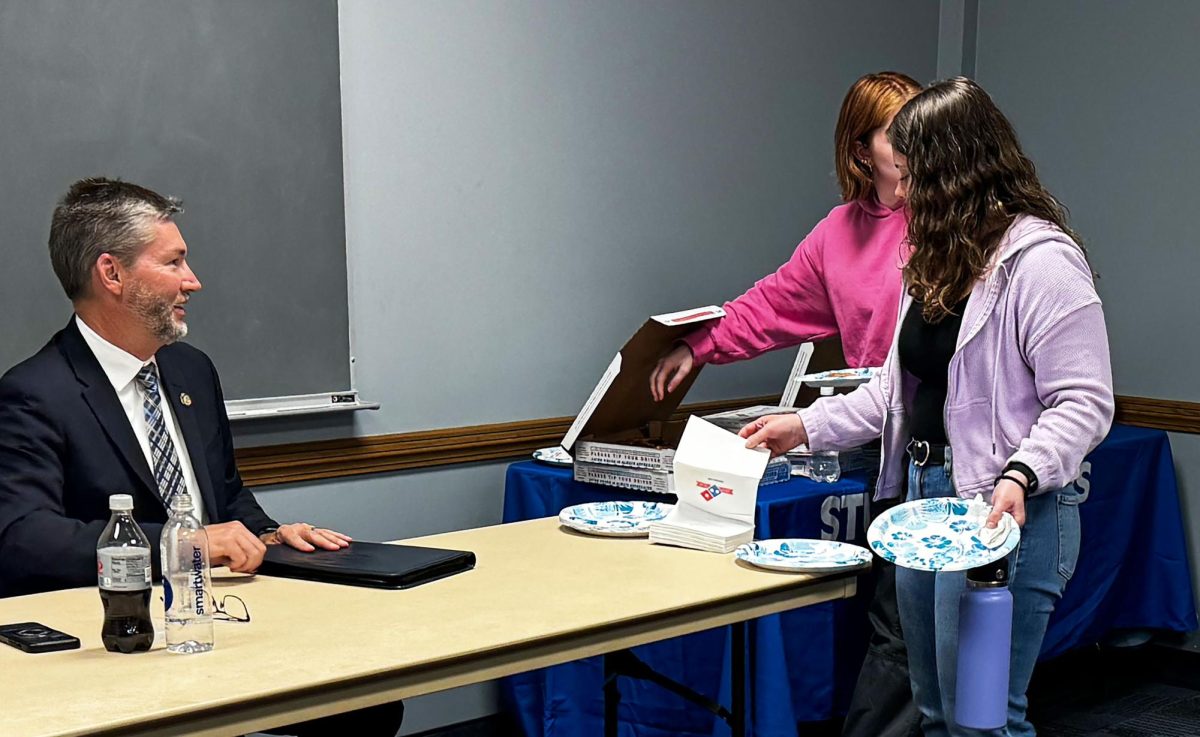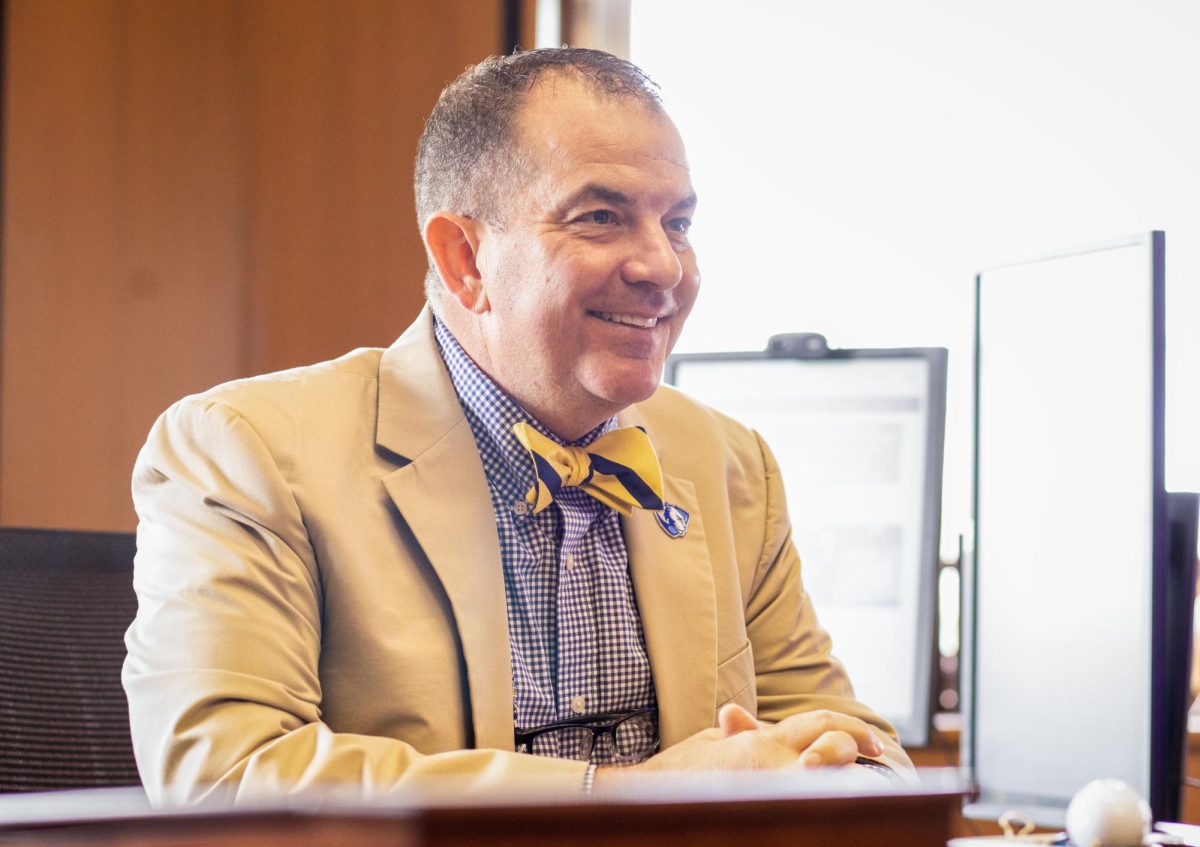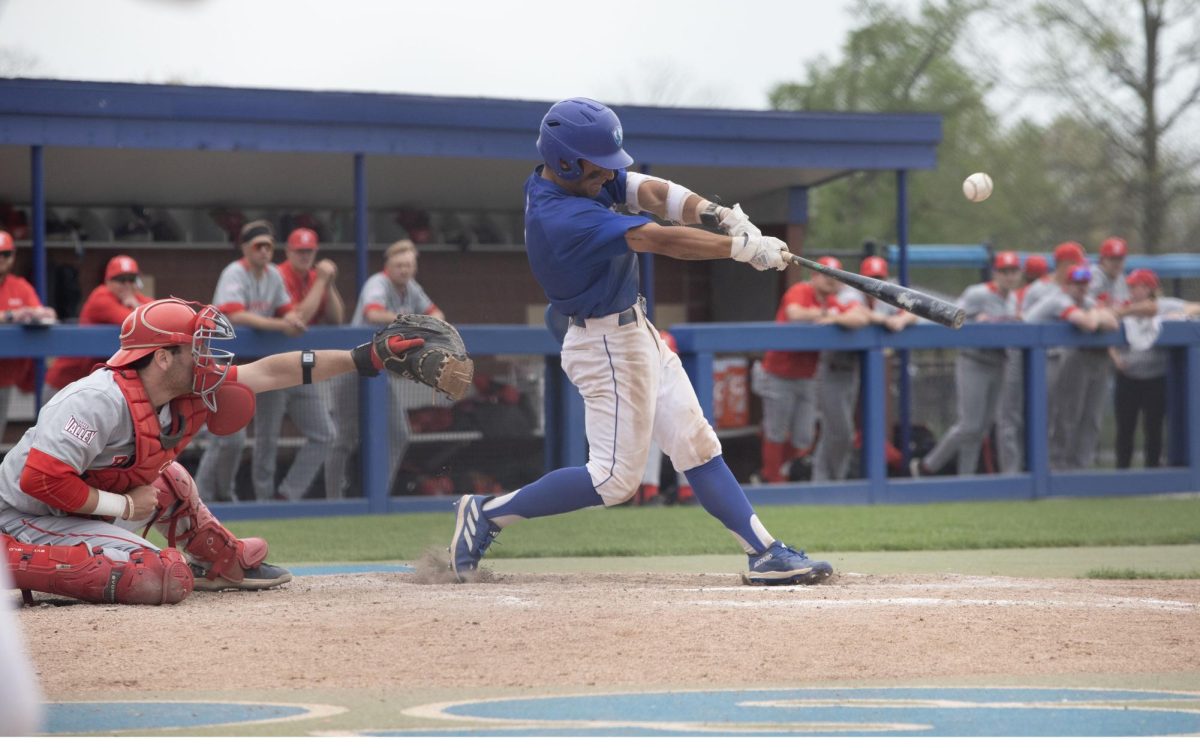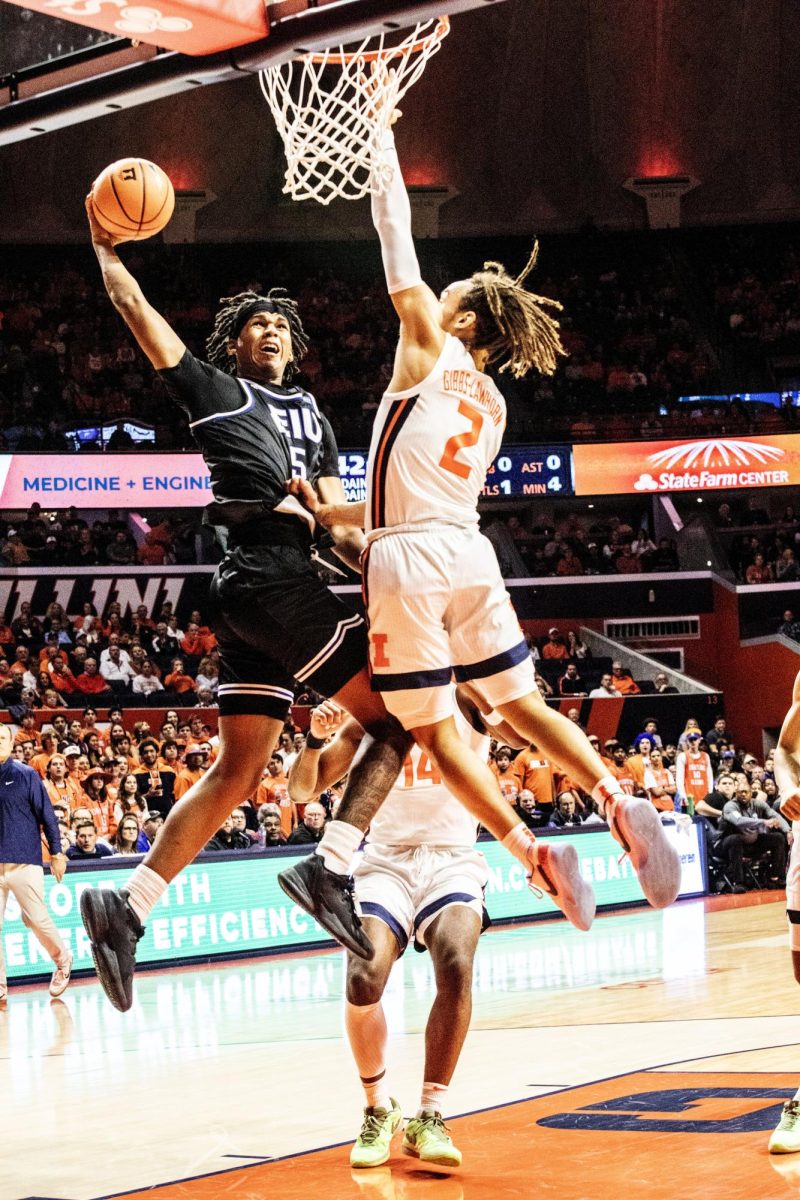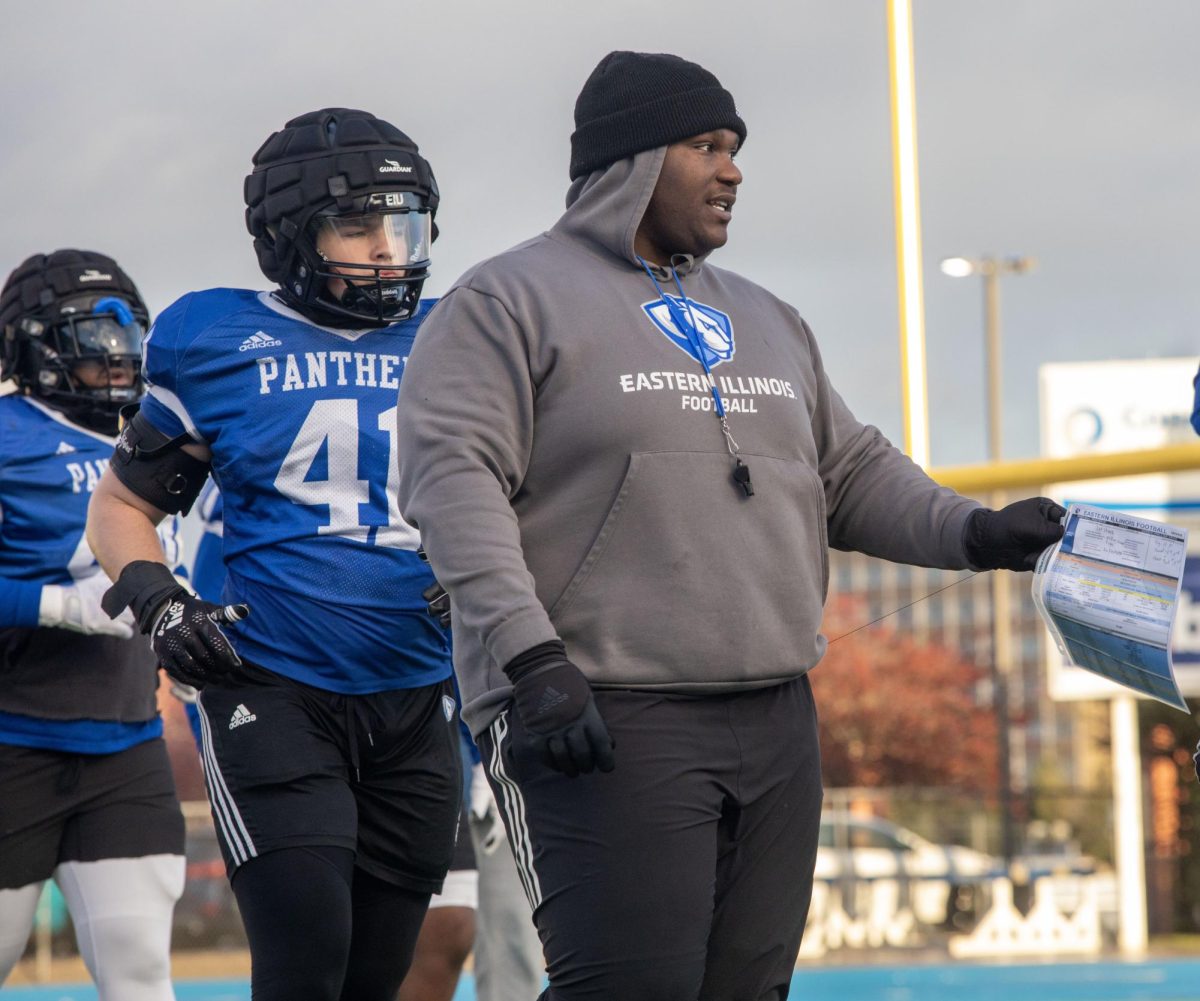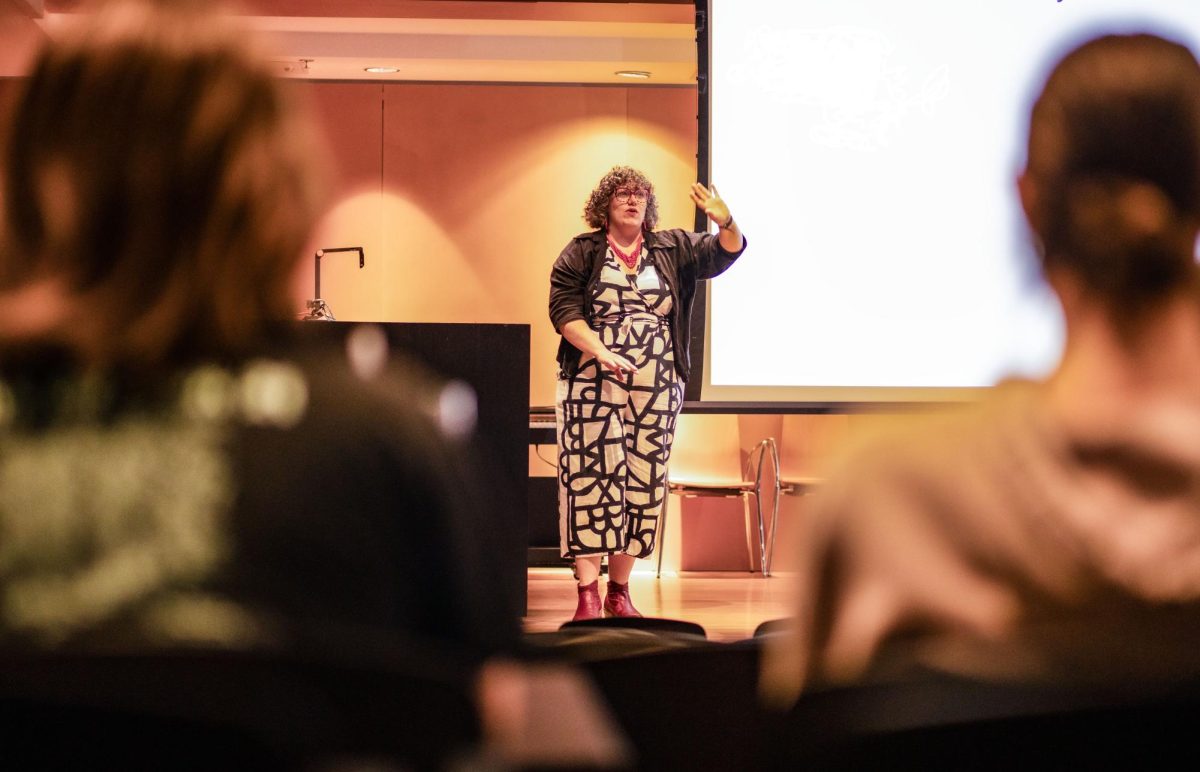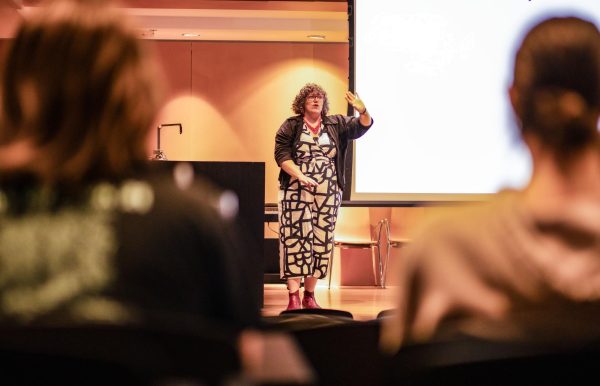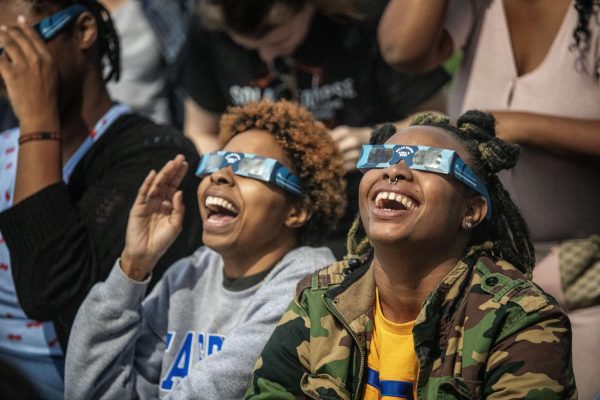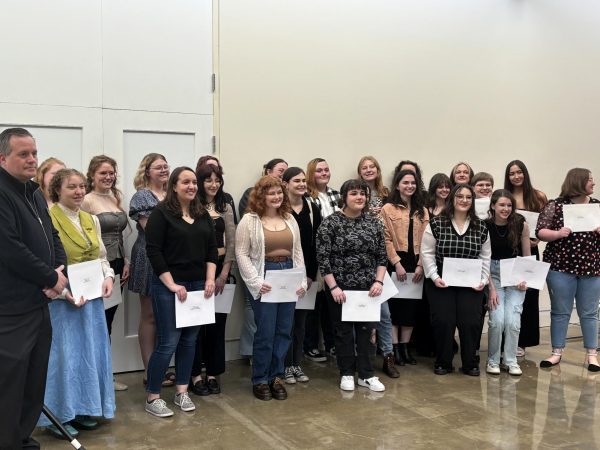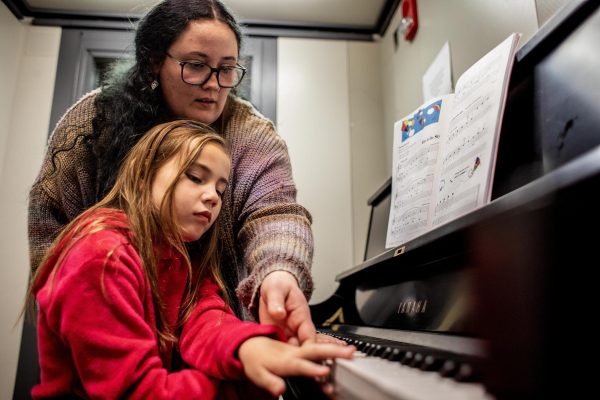Potential admissions director Ryan Cockerill gives on-campus interview at Eastern; wants to make ‘out of state’ connections to raise enrollment
For Ryan Cockerill, one of the best recruitment strategies to increase enrollment would be to focus on out of state students.
Cockerill, the current director of admission at Lewis University in Romeoville, Ill., presented his ideas for increasing enrollment at Eastern Tuesday in the Arcola-Tuscola Room in the Martin Luther King Jr. University Union.
Cockerill is a candidate for the director of Admissions at Eastern, and as part of his candidacy, offered suggestions on how to improve enrollment and recruitment to faculty and students.
And one suggestion was to focus on different out of state students, such as those from Indianapolis and St. Louis.
As a way to tap into the market of Indianapolis and St. Louis students, Cockerill said they need to be more aware of the fact that students from Indiana can pay Illinois residency rates – $20,140 compared to the out of state rate of $37,120 – if they attend Eastern.
Cockerill added that 90 percent of college-bound students only travel beyond 300 miles from home in order to attend school. He said recruiting past the 300 mile marker would see a 10 percent – at best – success rate.
“Most people probably don’t realize that you are closer to Indianapolis and closer to St. Louis than you are to Chicago,” Cockerill said. “That’s huge.”
However, just offering the in-state tuition is not enough, Cockerill said. Personalization needs to be a more primary focus.
“The days of the generalization approach are over,” Cockerill said.
Cockerill suggests email and telephone campaigns – having teachers in one area contact students interested in that area.
Another approach to adding the personalization is using the tools of social media. Cockerill said he would have his staff set up different Facebook pages and send friend requests to admitted students.
At first, the staff would post campus information, deadlines and maybe some items the students would find fun.
But then, he said, it evolved.
No longer was it just staff members posting, but incoming students asking about roommates, classes and other things. It was taken out of the admissions’ hands and put into the students’.
Despite the various suggestions of personal touch, when faced with a particular example of a student from a large high school with no idea what he wanted out of a college and no support system to help guide him, Cockerill said to get the student on campus.
“Get them to the campus,” he said.
Cockerill added this was a method for all students, not just the particular example. He said once the students are on campus it is easier for them to get connected to faculty and other students.
Parents then need to be educated, Cockerill said.
The students needed to be invested in the campus and then the parents could be educated about the programs and opportunities.
Cockerill also discussed the various programs offered at Eastern and how to tailor them for the current marketplace.
While Eastern has been traditionally a teacher-oriented university, the market for teachers is shrinking, he said.
Cockerill suggested looking at the other “niche markets,” using kinesiology as an example.
“Some of these niche markets, these programs that are not available at all colleges, that’s where you pick up your students from the outside markets,” he said.
Cockerill also went into the firm Noel-Levitz, a consulting firm that has been working with Eastern since November 2011.
Cockerill said while at Lewis University, he has worked with the firm as well.
He discussed the idea of financial aid leverage being a “necessary evil” in today’s admissions.
Blair Lord, the provost and vice president for academic affairs, said Regis Gilman, the dean of the school of continuing education, and Mary Herrington-Perry, the assistant vice president for academic affairs, are the hiring authority.
“I know that the search committee reviewed the application materials and determined that Mr. Cockerill warranted an on-campus visit,” Lord said.
He also said the search committee has been considering other candidates for the on-campus interviews, but was not sure of other visits.
“Just because a search committee identifies other potential candidates which it would like to interview does not mean that the candidates will actually choose to come,” he said.
A self-proclaimed “data nerd,” Cockerill told the audience he was all about data analysis when it comes to figuring out how to assess which students are going to which colleges.
He said the biggest telltale if the recruitment is working is based on if they student enrolls or not. Then, he said, it’s time to look at the schools, whether or not more or less recruitment is needed. He said he also looks at the historic rates of schools – up to the last five years.
Along with looking at historical rates, Cockerill said at Lewis University, they have been pulling out of certain college fairs and recruitment days in schools where they have historically not gathered any students.
“We’re reinvesting our time and energy in schools where we historically got 10 to 12 students,” he said. “Well now we want 14 to 15 students. If you do that at 20, 30 schools, you’ll pick up the slack.”
Bob Galuski can be reached at 581-2812 or [email protected].




